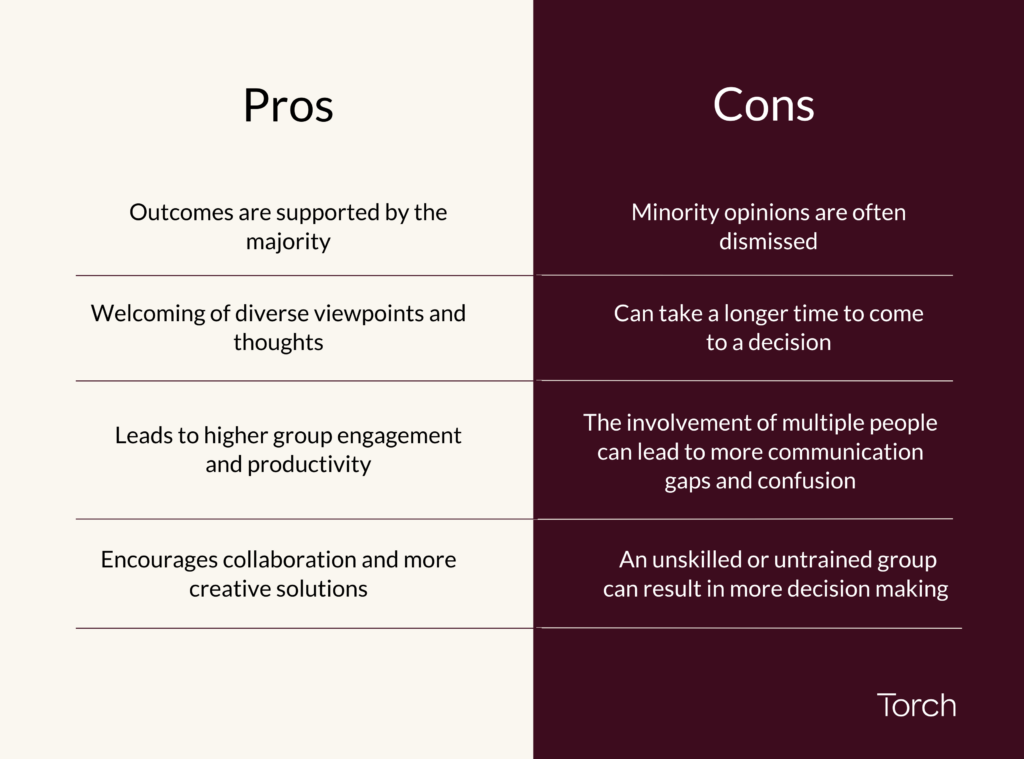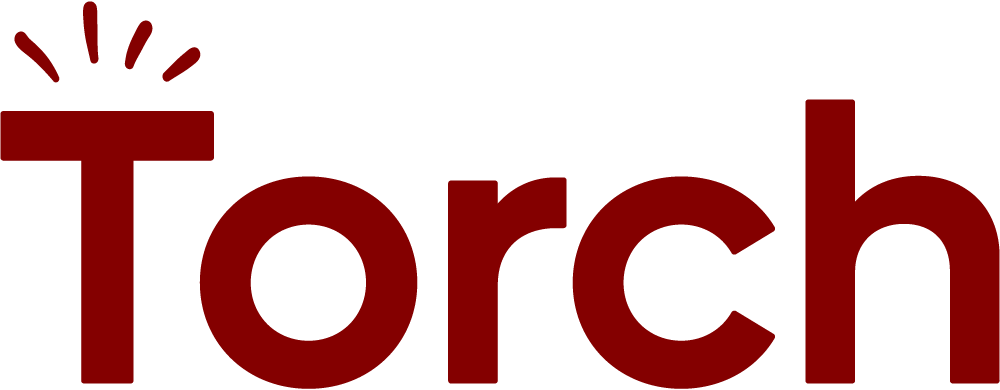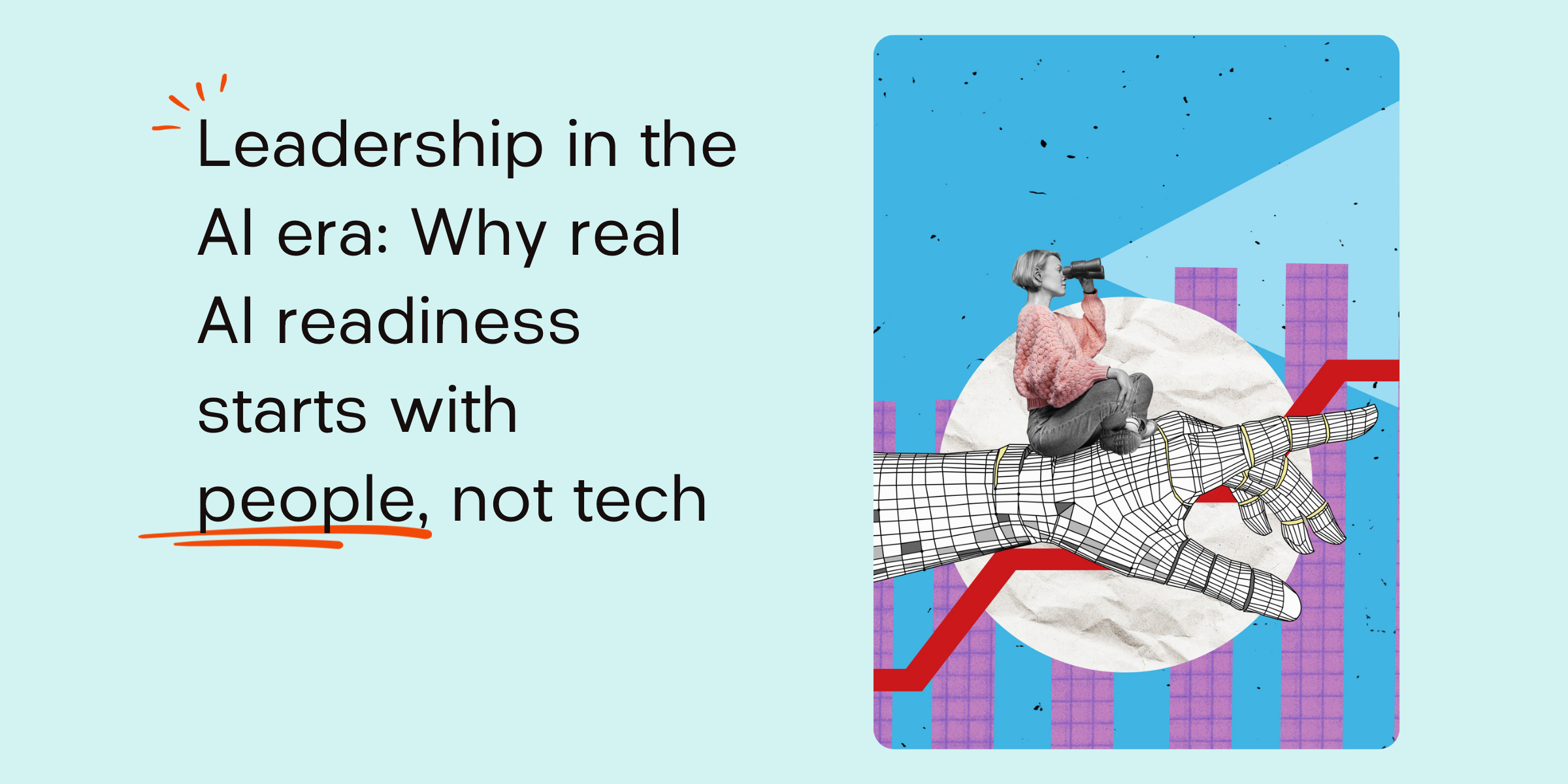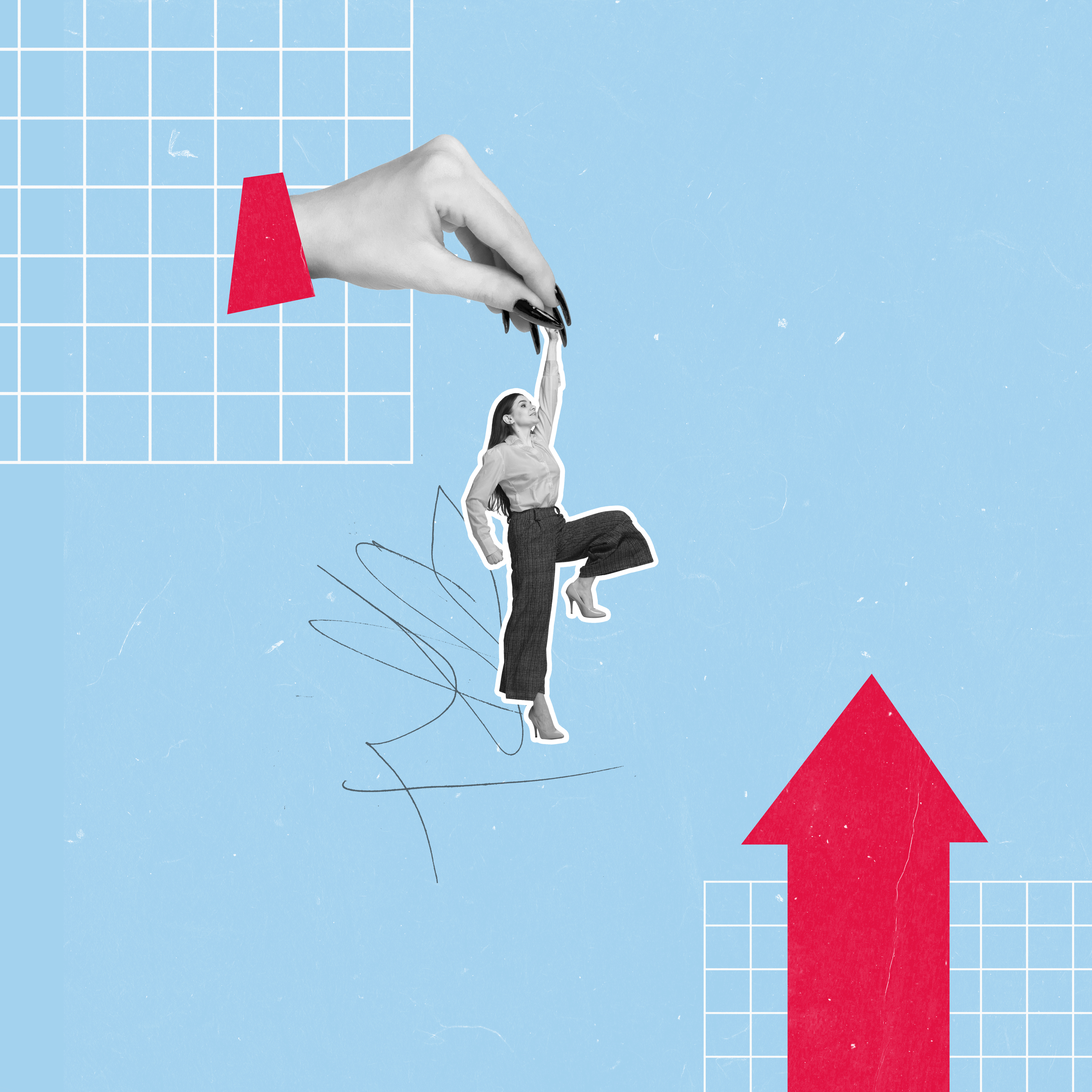By now, we’ve introduced various leadership styles in our series. Some you may be familiar with, while others are completely new concepts. Today’s leadership style is one you’ve likely heard of, and maybe even actively practice in your own role: democratic leadership.
What is democratic leadership?
Democratic leadership, which is also commonly known as participative leadership, is about letting multiple people participate in the decision-making process. This type of leadership can be seen in a wide range of contexts, from businesses to schools to governments.
The framework
In the 1990’s, John Gastil published an article in the journal Human Relations that outlined the framework for democratic leadership. This framework defines three core tenets of this leadership style:
- The distribution of responsibility. The democratic leader shouldn’t be the one to hold onto all the responsibility. Instead, their role is to distribute the responsibility and maximize the involvement of others in an effort to achieve the specified objectives.
- The empowerment of others. Democratic leaders also need to empower their members to make smart decisions. Encouraging people to take on shared responsibilities is a great way to achieve this, as the process of involvement can help them become more practiced at decision-making, critical thinking, and other valuable skills that can increase their self esteem and competence.
- The aiding of decision-making. Finally, democratic leaders also need to play the role of facilitator when it comes to decision making. This means being able to guide groups through productive conversations, maintaining healthy relationships across teams, and creating a space where a democratic approach is truly embraced.
What are the pros and cons of democratic leadership?

In today’s workplace, democratic leadership is widely accepted and practiced. However, that doesn’t mean it doesn’t have drawbacks or weaknesses. To give you a complete picture of this leadership style, we outlined the pros and cons:
Pros
- Encourages collaboration
- Welcoming of a variety of opinions and ways of thinking
- Leads to higher group engagement and productivity
- Can result in more creative solutions
- The outcome is supported by the majority
Cons
- The minority opinion is overridden
- The involvement of multiple people can lead to more communication gaps and confusion
- Can take a longer time to come to a decision
- An unskilled or untrained group can result in more decision making
How to apply democratic leadership
One of the benefits of democratic leadership is that it can be applied in many contexts. Whether you’re an elementary school principal running a meeting for the parents of students or a vice president hosting a brainstorm with employees, democratic leadership can be a valuable skill to turn to. In order to maximize the effectiveness of this leadership style, we recommend taking the following steps:
Invest in training
A democratic organization is only as good as its members. In other words, if your members don’t know how to think critically and make good decisions, you likely won’t see positive outcomes. It’s unfair to expect everyone to magically obtain these skills, which is why training is such a critical component of democratic leadership. Allow your members to take courses, receive coaching or mentoring, and discover learning opportunities to help them improve. Most importantly, give them the time and space to practice these new skills without fear of failure.
Life moments can be powerful levers for behavior change.
Watch the on-demand webinar to learn about “moments that matter” and how you can use them to create positive change.
Similarly, we encourage democratic leaders to invest in their own training as well! Being a democratic leader requires you to practice many skills – such as communicating, facilitating, speaking, relationship building, and creating a “coaching culture“, among others. If you find yourself struggling in any of these areas, seek out additional support.
Maintain neutrality
It may be tempting to guide decisions in a certain direction, especially if you strongly feel that one option is better than the other. However, this defeats the purpose of democratic leadership. Remember: your role isn’t to influence the decisions that are made. Your goal is to share the responsibility, empower your members, then facilitate the decision-making process. While challenging, you have to make yourself as much of a neutral third-party member as possible.
Find opportunities to improve
One of the downsides of the democratic leadership style is that some people will inevitably be unhappy with the final decision. While we empathize with wanting to make everyone happy, it’s simply not realistic. So don’t be hard on yourself when members complain about the outcome. Instead, use this as an opportunity to improve. Besides being unhappy with the results, do your members have any constructive feedback to share about the process or your method of leadership? It may be difficult to hear, but these observations can be incredibly valuable and help you fine-tune your leadership style.
Look around, and you’re likely to see democratic leadership in action everywhere. If this is a leadership style that appeals to you, we encourage you to take our recommendations to start putting it to practice.









